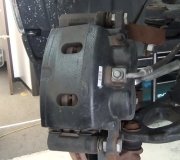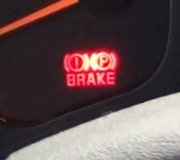Joe,
Thanks for the quick reply.
Didn't do the brake bleeding in the order you listed. I've always done brake bleeding starting with the wheel furthest from the master cylinder and working to the nearest (in this case RR, LR, RF, LF). Was done the old fashion way with a helper (my wife) in the car pressing on the brake pedal while I opened/closed the bleeder valve.
I did a visual of the brake hoses. They looked okay but didn't check if they expanded when the pedal was pressed.
I did check the RF caliper for movement. Had my wife step on the brake while I had the caliper off and a big C clamp and steel block held against the piston. I was surprised to find when I back off the C clamp a little and she pressed on the brake the piston would move only an 1/8 of an inch or so. Was expecting the piston to shoot out and hit and steel block hard, like when it is being removed with compressed air for a caliper rebuild.
When I bench bled the master cylinder it got harder to push in the piston but never to the point I couldn't push the piston in. Should it have gotten to the point I couldn't move the master cylinder piston? If that is the case I'll have to pull it and try the bench bleeding again to verify if it is defective or not.
Friday, June 12th, 2020 AT 4:48 AM


